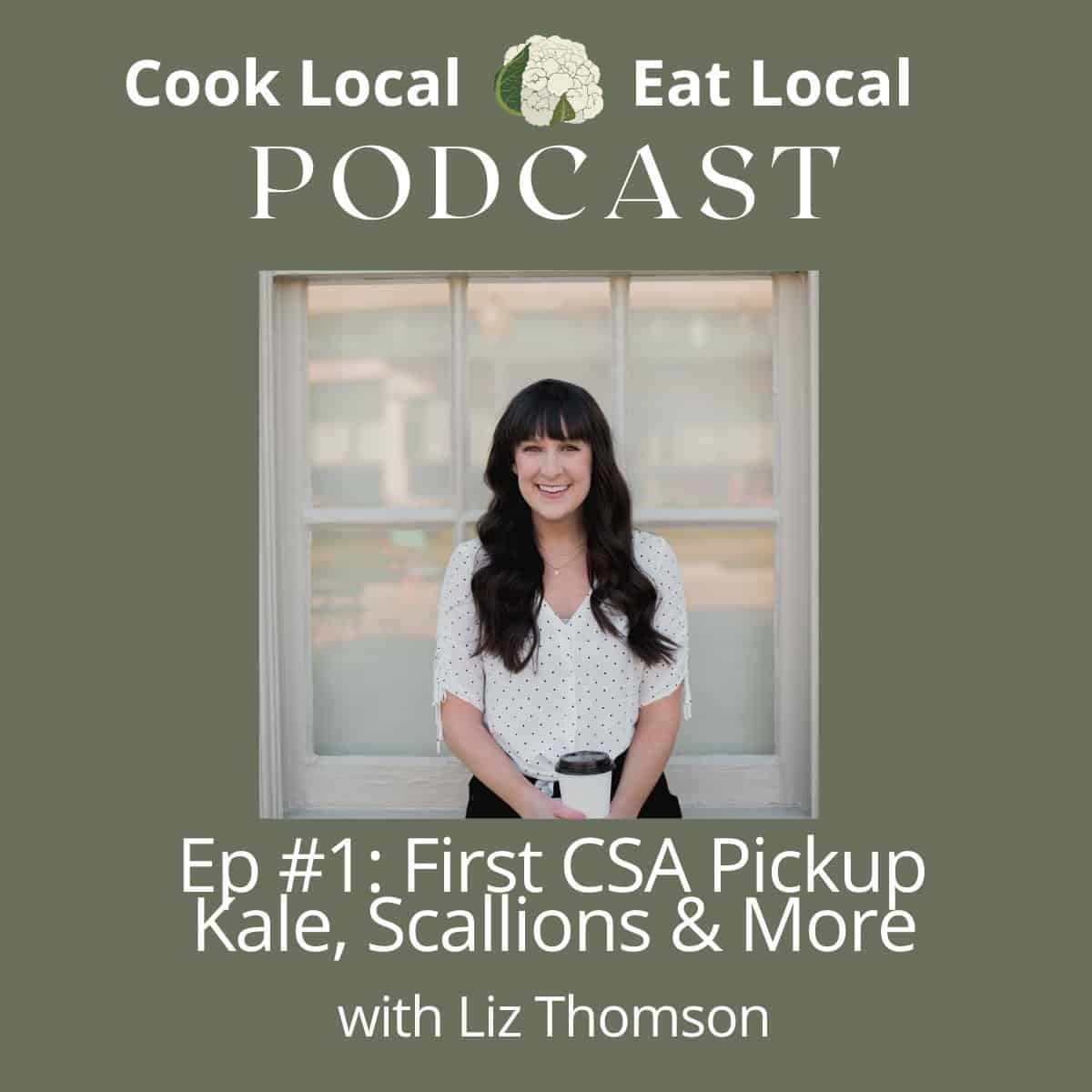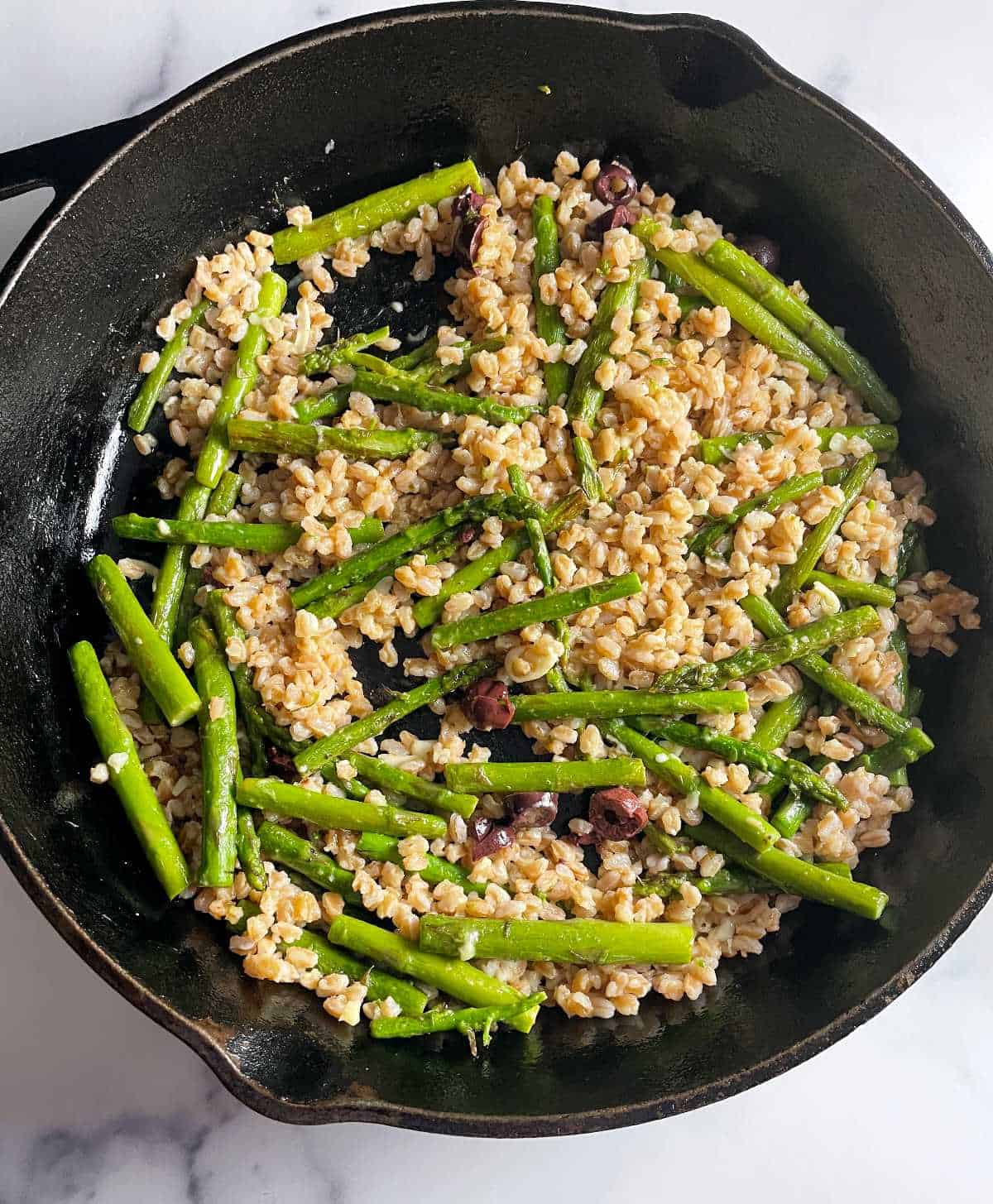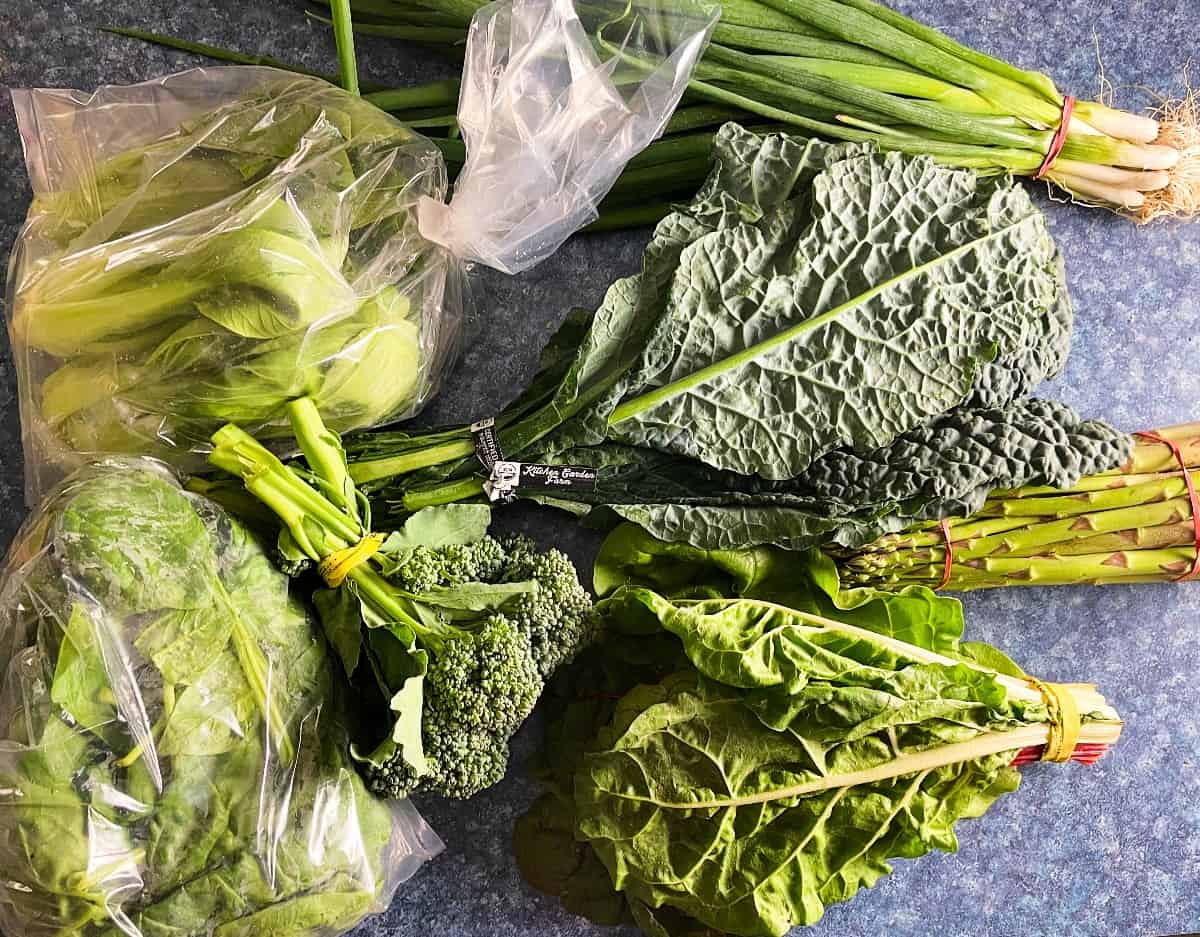In Episode 1, we explore what to make with the produce in our first CSA farm share pickup of the season! Guest Liz Thomson from I Heart Vegetables shares ideas for what to make with Tuscan kale, asparagus and scallions, along with other tips based on her love for veggies. You can listen to the podcast right here!
And you can also listen to the podcast & subscribe on:
Apple podcasts | Spotify | Amazon Music
Check out the podcast episode and show notes below for ideas about what to make with your local vegetables.
Jump to:
Today’s guest – Liz Thomson

In Episode 1, we dig into our first CSA farm share of the season with Liz Thomson. She is the creator behind the food blog I Heart Vegetables and the author of the Truly Healthy Vegetarian Cookbook. Liz loves creating simple, delicious recipes to show that eating vegetables can be easy and delicious.
Be sure to check out the episode and Liz’s website for great ideas that will get you and your family loving your vegetables, too!
Recipes for Tuscan kale, asparagus and scallions

Here are some of the recipes Liz recommends for using some of the produce we found in our first CSA pickup:
- Lacinato Kale Salad
- Warm Kale Salad
- Panko Crusted Asparagus
- Farro and Asparagus Salad
- Breakfast Rice Bowl
I’ve made a version of the Farro and asparagus salad, and it was delicious! I can’t wait to try the other recipes; let me know in the comments or an Instagram tag @cooklocaleatlocal if you make one of them.
Liz also had some great tips for keeping scallions fresh longer by storing them like you would flowers. Listen to the episode for details!
What is a CSA?
CSA stands for “Community Supported Agriculture”. I will be back with more information on CSAs, but simply put, CSAs enable consumers to purchase a share of produce from a local farm. Typically one purchases the CSA shares in advance of the growing season. This gives the farm resources and a reliable source of revenue as they begin planting.
For the consumer joining a CSA, you get a regular flow of fresh local produce into your home. It’s a great way to get a feel for what is in season; and it will also push you to try some new vegetables and new recipes for familiar ones. Cook Local Eat Local is a great resource for you if you have joined a CSA!
Each CSA is going to work a bit differently, so check out the details about how your local CSAs work. For several years, I have enjoyed the Walden Farms CSA. I pick up my CSA share every two weeks (there is a weekly option), and coming up with plans to use that CSA share will be the basis of many of these Cook Local Eat Local podcast episodes!
Lacey Arnold from Warner Farm is scheduled to join Cook Local for our July 28th episode. Stay tuned for that episode as a way to learn more about CSAs!
If you’re in the Boston area, and want to sign up for the Warner Farm, you can use this sign-up link to get a $20 credit (and I get some extra veggie $ for the referral!).
What we made – CSA pickup 1

So after chatting with Liz, doing some planning and then rolling through our week, here is how we used the vegetables from our first CSA pickup!
Asparagus
Asparagus is typically something we try to use first! It doesn’t keep as long as some other items. So we made a version of Liz’s Farro and Asparagus Salad, and it was delicious! I wound up combining the ingredients in the skillet, so it was more of a warm salad. We had the asparagus salad with some Beyond Sausages to round out a tasty vegetarian meal.
The meal was delicious paired with the I Clivi 2017 Verduzzo ($30, 13% ABV), a complex white wine from the Friuli region in Northern Italy. The wine spends substantial time on lees, generating complex layers of flavor. Notes of almond, cream and lemon. Asparagus isn’t easy to pair with wine; but this worked! The hearty farro and cheese helped for sure. I picked up this wine at Malden Center Fine Wines, if you are looking to grab a bottle in the Boston area.
Asparagus has been rolling in lately! So I should also mention that I updated this delicious Roasted Asparagus Dip after making a batch the other day.
Tuscan kale and broccolini
It was interesting to hear Liz’s take on how Tuscan kale works well in salads, being a bit more mild. I am going to have to try that! But for this bunch of Tuscan kale, we went to one of our standard moves for kale — made a big batch of kale pesto!
The night we made the kale pesto, we also steamed the broccolini. That was delicious tossed in with the kale pesto and ziti! This was a big cooking night — also made our Simple Pan Seared Salmon; largely for our teen who isn’t a fan of the veggie only meals! I had a bit of the salmon with my pasta; it goes well with the pesto.
When we got broccolini in another CSA share, we cooked up this broccolini pasta recipe.
Baby bok choy
The baby bok choy was a good excuse to make our Pork and Bok Choy Stir-Fry, which came out well. We will be posting a few updates to that recipe soon based on the latest batch!
Keeping with the local theme, we used pork chops from our Walden Local Meat share. The local grass-fed meat tends to be lean, so you just need to avoid overcooking it in that stir-fry recipe.
Spinach
We had a large bag of full-grown spinach to work with this week, too. We get baby spinach a lot, and use it for salads and for adding greens to sandwiches and wraps.
But this spinach was made for cooking! So we made a spinach and mushroom pasta dish, taking the recipe we linked to there as a starting point. But also added in some chickpeas for protein and fiber, and used whole wheat pasta elbows for additional nutritional value.
Scallions and Swiss chard
A huge bunch of scallions was also featured in our first CSA pickup! We added one to the kale pesto, and used another in the pork and bok choy stir-fry. But that still left us with a lot of scallions!
I recalled a recipe for Lentils and Bulgur with Fried Onions in the Milk Street Tuesday Nights Mediterranean cookbook used scallions. I was pleased to see when I opened to the recipe that it calls for a whole bunch of scallions! So this recipe was the perfect way to use a big bunch of scallions.
That recipe is based on a classic Middle Eastern dish called mujaddara. If you don’t have the Milk Street Mediterranean cookbook, here’s a link to their recipe. You need to sign-up for their email list to access it; if you’d rather not do that, this mujaddara recipe from Cookie and Kate looks pretty similar.
After cooking the onions for the recipe, I quickly sautéed the Swiss chard in the oil remaining in the skillet. That made for a nice green side dish.


Camilla Mann
Fantastic job, David. I finally had a chance to listen to episode 1. I chuckled about the canned green beans and am looking forward to trying some of these ideas. Thanks for the inspiration.
Cooking Chat
Thanks Camilla! Glad you enjoyed the episode.